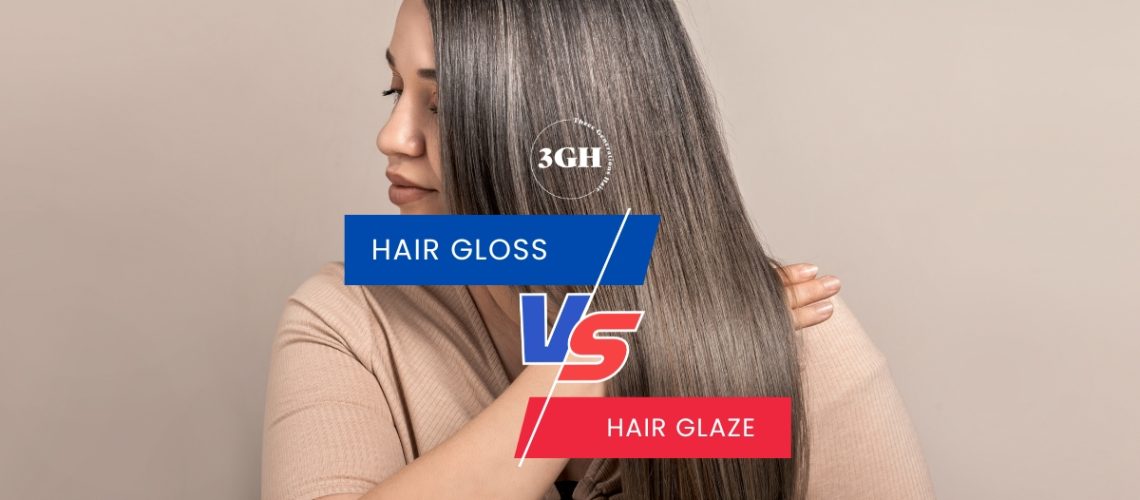Hair Gloss vs hair Glaze
When it comes to achieving shiny, healthy-looking hair, many of us turn to hair treatments such as gloss and glaze. These treatments have gained popularity in recent years for their ability to revive dull or lifeless locks, but it can be difficult to understand the difference between them.
Hair Gloss
Some uses of hair gloss include:
- Enhancing shine and adding dimension to dull or lifeless hair.
- Adding or refreshing color on the ends of the hair.
- Darkening or changing the shade of the existing hair color.
- Neutralizing unwanted colors like brassy hair, yellow or orange tones.
- Maintaining color, helping with discoloration, and preventing fading.
- Enhancing natural hair color or complementing a previously applied hair color treatment
- Great for grey hair, helping to blend the greys and giving it a more natural look.
- Revitalizing dull, damaged hair and protecting it from environmental stressors.
- Perfect for those who want to add some shine and vibrancy to their hair without making a significant color change.
- Tinted hair gloss can be used to add subtle highlights or lowlights to hair
- For those who have sensitive scalp, it’s a good option as it’s a more gentle treatment compared to regular hair color treatment.
Hair Glaze
Some uses of hair glaze include
- Refresh short-lived colors like reds, giving them renewed vibrancy and shine.
- Reducing brassiness or unwanted warm tones in hair color.
- Adding shine and enhancing the overall appearance of the hair.
- Enhancing natural hair color or complementing a previously applied hair color treatment
- Reducing frizz and flyaways, which can make the hair appear healthier and more manageable.
- Extend the life of your hair color by using it as a touch-up between coloring.
- Giving a subtle change to your hair and boost the dimension without much of a commitment
- For people with grey hair, it can help to blend the greys, giving it a more natural look.
- It is a good option for those who have sensitive scalp or prefer a more natural treatment.
- It can be used as a conditioning treatment as it has conditioning ingredients to moisturize the hair
- It also works as a protective barrier against environmental stressors.
Final Thoughts
While the terms hair gloss and glaze are often used interchangeably, they have distinct differences. Gloss is more permanent than glaze, but both treatments offer shine and refreshed color as their main benefits. The best way to determine which treatment is right for you is to consult a professional hair stylist who can evaluate your hair needs and desired results.
There are different types of hair gloss and glaze available in the market, some are specifically formulated for different hair types like for dry, damaged, curly or for blonde hair etc. Both gloss and glaze treatments can be done at home with a wide range of at-home kits available in the market, but if you are unsure of the results or have never done it before, it’s best to have a professional stylist apply the treatment. After care is also important to maintain the effects of hair gloss and glaze, it is recommended to use hair care products formulated for color-treated hair and avoid excessive heat styling or harsh chemicals.



2 Responses
Definitely going to have to try these! Very interesting read!
This is really interesting, I didn’t know this. Thank you